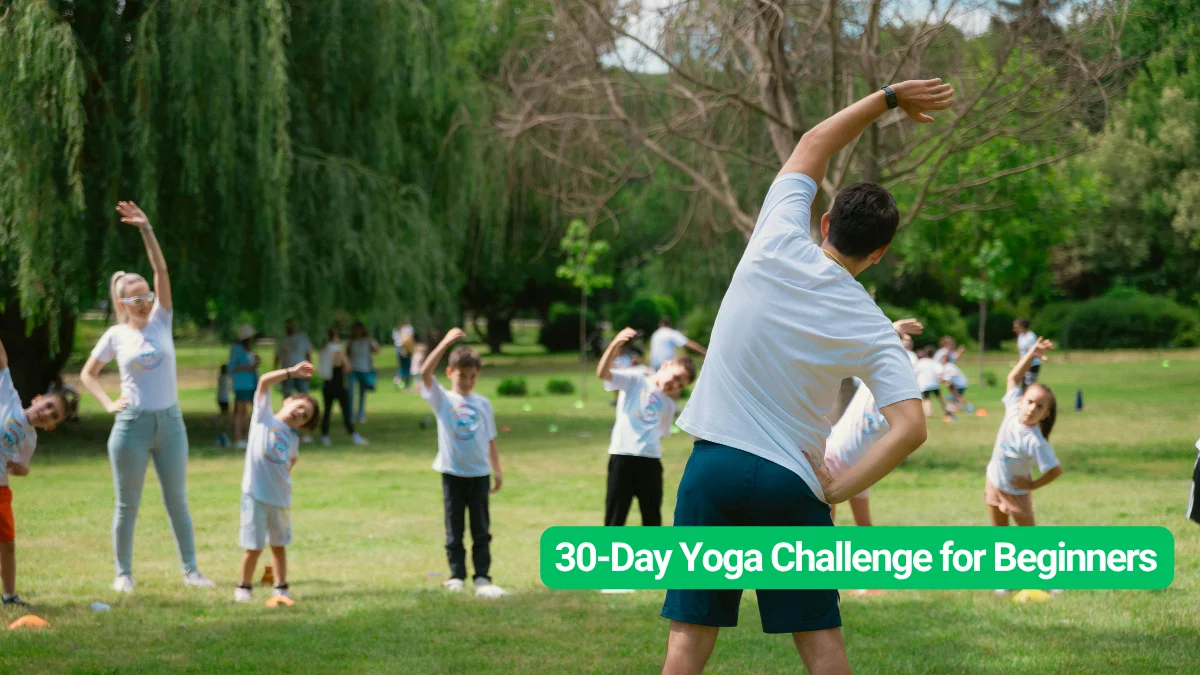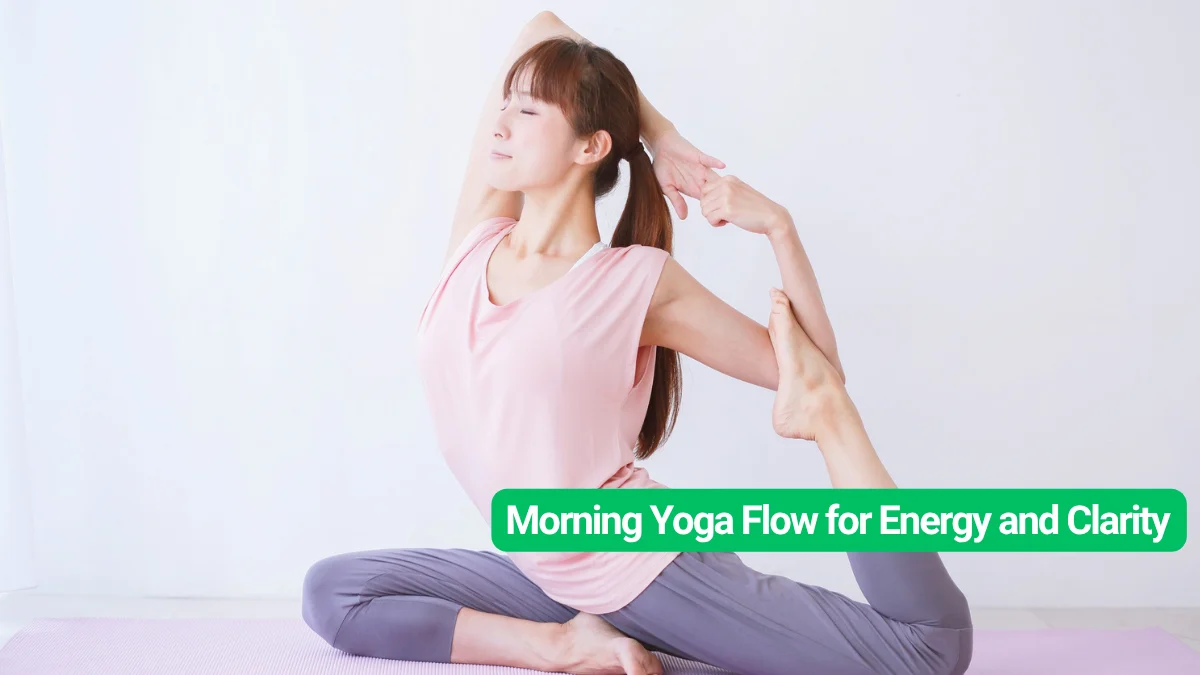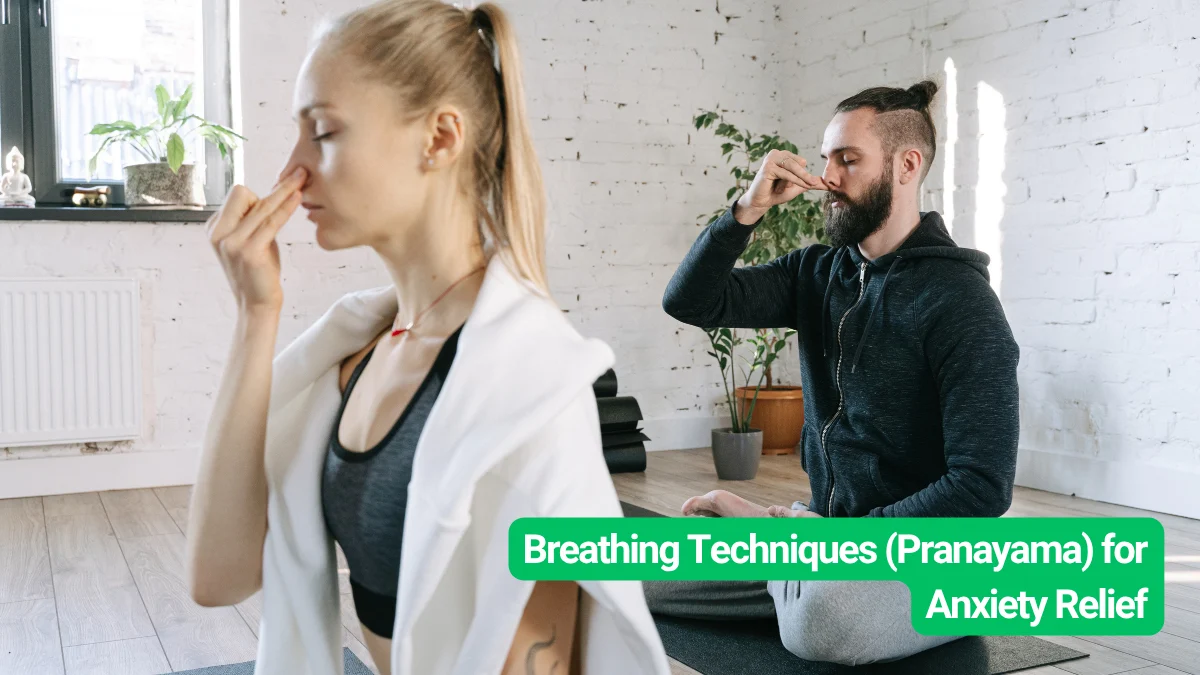Yoga is a practical way to improve flexibility, build strength, and fix posture. The practice combines simple movements, steady breathing, and focused attention. Many people notice benefits in a few weeks. Yoga works for all ages. You can practice at home or in class. Start slow and stay consistent.
Key Takeaways On Yoga Improves Flexibility, Strength & Posture
- Yoga increases range of motion and reduces muscle tightness.
- Many poses build real strength in core and limbs.
- Better posture comes from stronger core and greater body awareness.
- Breathing and mindfulness reduce stress and help recovery.
- Consistent practice of 10 to 30 minutes daily gives steady results.
Also Read

30-Day Yoga Challenge for Beginners
How Yoga Boosts Flexibility
Yoga stretches muscles and opens joints. Regular practice increases the range of motion. Tight muscles relax over time. This reduces stiffness and lowers the risk of injury. Simple poses like cat-cow and forward bends move the spine gently. Holding stretches teaches muscles to lengthen.
Aim for slow progress. Do not force a pose. Hold early poses for 30 to 60 seconds. Use props if you need support. Repeat practice several times per week for best results.
How Yoga Builds Strength
Many yoga poses require you to hold your body weight. This builds muscle and endurance. Plank, downward dog, and warrior poses work the shoulders, core, and legs. Balancing poses improve the small muscles that support joints.
Core strength comes from steady engagement of the belly and back muscles. Strong core makes other exercises safer. Strength gains help daily tasks. You lift, carry, and bend with less effort. Start with shorter holds. Gradually increase the hold time as you get stronger.
How Yoga Improves Posture
Good posture needs strong muscles and flexible joints. Yoga trains both. Sitting and standing poses teach spine alignment. The practice also increases body awareness. You learn to notice when you slouch. This helps you correct posture during the day. Many poses open the chest and strengthen the back.
This reduces forward head posture and rounded shoulders. Over time you stand taller. Sitting feels more comfortable. Poor posture that comes from long sitting can improve with regular practice.
Breathing and Mindfulness Help Recovery
Yoga asks you to focus on the breath. This lowers stress and calms the nervous system. Lower stress reduces levels of cortisol. Lower cortisol helps with better sleep and less abdominal tension. Breathing exercises expand lung capacity and improve oxygen flow. This supports recovery after workouts.
Mindfulness helps you make better choices. You may eat less out of stress. You also move with more care. These small changes add up.
Benefits for Sleep, Stress and Heart Health
Regular yoga improves sleep in many people. Gentle evening routines help the body relax before bed. Yoga also lowers heart rate and may help blood pressure.
These effects support better long-term health. People who practice yoga report less anxiety and better mood. The combination of movement, breath, and quiet time creates real mental benefits.
How to Start Safely
Start with short sessions of 10 to 15 minutes. Learn basic poses first. Consider a beginner class or short online sessions. Use a chair or block if you need support. Avoid forcing deep stretches.
If a pose hurts, ease out of it. If you have medical concerns, talk to a doctor before starting. Progress slowly. Aim for regular practice rather than long sessions once in a while.
One Simple Routine to Try
- Cat-Cow for spinal mobility.
- Downward Dog for hamstrings and shoulders.
- Low Lunge for hip opening.
- Plank for core strength.
- Child’s Pose for rest and recovery.
Hold each pose 30 to 60 seconds. Repeat the set two or three times.
7 Best Yoga Poses for Flexibility, Strength and Posture
- Cat-Cow : Mobilizes the spine and eases back stiffness.
- Downward Dog : Stretches hamstrings and strengthens shoulders.
- Low Lunge : Opens hips and improves stride.
- Plank : Builds core and shoulder strength.
- Warrior II : Strengthens legs and improves balance.
- Bridge : Activates glutes and opens the chest.
- Child’s Pose : Releases tension and aids breath work.
1. Cat Cow
Cat Cow is a gentle pose that helps the spine move in a smooth and natural flow. When you round the back and then open the chest the spine starts to loosen after long hours of sitting. This makes the back feel lighter and reduces that stiff feeling that often builds during the day. The steady movement creates warmth and helps the muscles support the spine in a better way.
This pose also brings a slow rhythm to the breath which helps the body relax. When the breath and movement match each other the mind becomes calmer and the body feels steady. Many people find this pose helpful at the start of a yoga session because it prepares the whole back for deeper work. With regular practice your posture improves as the spine learns to move freely again.
2. Downward Dog
Downward Dog is a pose that stretches many areas of the body at the same time. The hamstrings lengthen with each breath and the shoulders gain strength as they support the weight. This creates a balance between stretch and strength which is helpful for daily movement. Over time the back muscles learn to support the posture in a more natural way.
The pose also brings fresh blood flow to the upper body and helps release pressure from the spine. When the heels reach toward the floor the calves stretch in a deep but comfortable way. This improves mobility for walking running or any activity that needs flexible legs. Many people use this pose as a reset during a yoga session because it brings energy and focus back to the breath.
3. Low Lunge
Low Lunge is a helpful pose for opening tight hips which is common for people who sit for long hours. When the back leg extends and the front knee bends the hip muscles start to release tension. This improves comfort while walking and increases the natural length of your stride. Many athletes use this pose to prepare the legs for deeper movements.
This pose also helps lengthen the spine as you lift the chest. The balance between the front and back leg builds strength in a steady way. With each breath the hip flexors open more and the lower back feels supported. It also teaches stability as you try to keep the body still while stretching the hips.
4. Plank
Plank is a simple looking pose but it builds strong core muscles when held with steady breath. The pose teaches the body to stay firm without collapsing which improves strength for daily activities. The arms and shoulders take part in the pose and learn to hold the body weight with confidence.
The core muscles support the lower back and help create a stable posture. When practiced often plank makes other yoga poses easier because the midsection becomes strong. This strength also helps protect the spine from strain during heavy work or long hours of sitting. Holding plank a little longer each day builds both endurance and focus.
5. Warrior II
Warrior II builds strength in the legs through controlled movement and steady breathing. The wide stance works the thighs and glutes while the arms stay extended. This builds endurance and balance at the same time. The open chest also teaches the body to maintain a tall posture even in a strong pose.
As you hold the pose the legs begin to work harder and the hips open in a smooth way. The gaze over the front hand improves focus and mental stability. This pose helps build confidence because it requires stillness and strength together. Many people use Warrior II to improve alignment and body awareness.
6. Bridge
Bridge is a gentle backbend that helps open the chest and strengthen the glutes. When the hips lift upward the spine gains space and the chest expands. This is helpful for people who experience tightness from sitting or leaning forward during work. The glutes and hamstrings work together to support the lift which strengthens the lower body.
As the chest opens the breath becomes easier and deeper. Many people feel calmer after holding the pose for a few breaths. Bridge also helps improve posture by reversing the curve created by long hours of sitting. With practice this pose reduces tension around the neck and shoulders.
7. Child Pose
Child Pose is a gentle resting pose that brings a deep sense of comfort to the body. When the hips rest back toward the heels the lower back relaxes in a natural way. This helps release tension that builds up through daily activities. The forehead on the floor brings a grounding effect which calms the mind.
The pose also helps improve breath awareness because the stomach moves softly against the thighs. This slow breathing brings peace and reduces stress. Many people use Child Pose whenever they need a break during a yoga session because it helps the body reset without strain.
Common Mistakes to Avoid
Do not force flexibility. Do not hold breath during effort. Do not skip warm ups. Do not push through sharp pain. Slow, consistent practice is safer and more effective than long, aggressive sessions.
Final Words
Yoga gives real benefits for the body and mind. It increases flexibility. It builds practical strength. It improves posture and body awareness. The results come from steady practice. Small daily sessions beat rare long workouts. Keep the practice simple. Breathe well. Move with care. Over time your range of motion, strength, and posture will improve.






